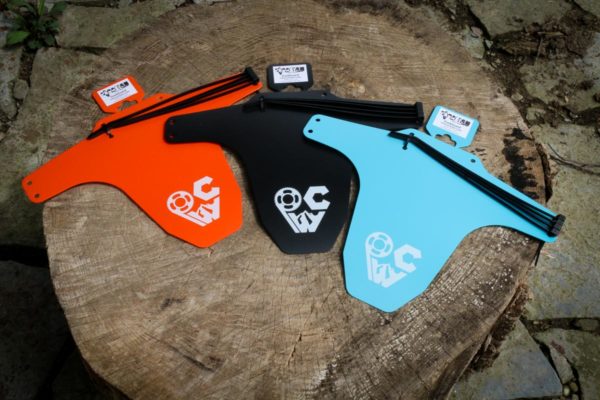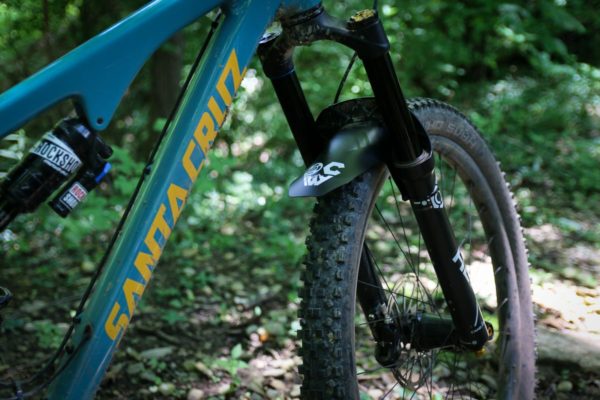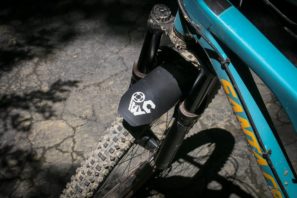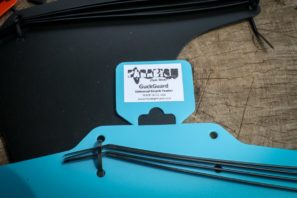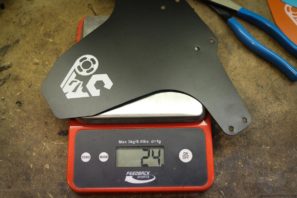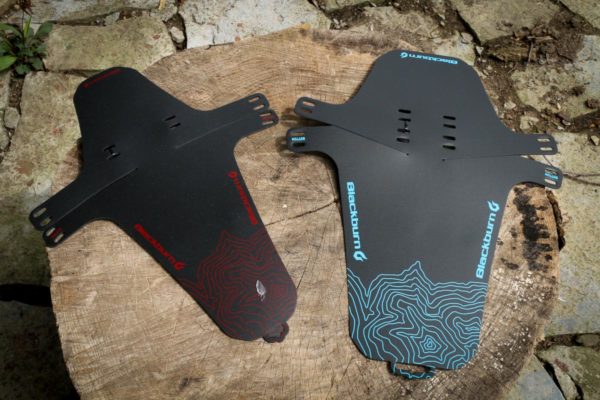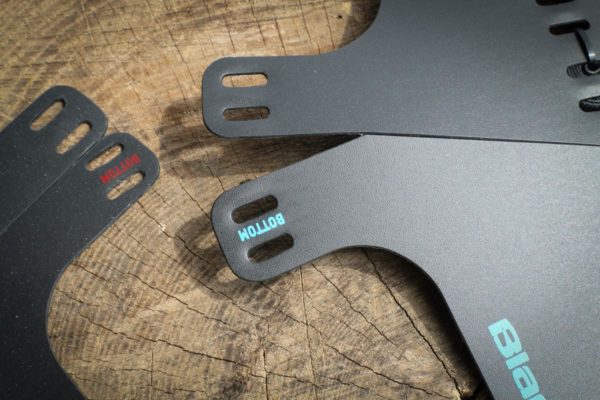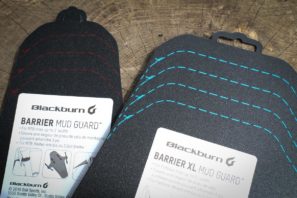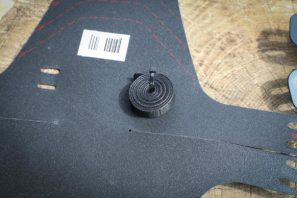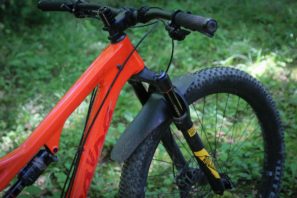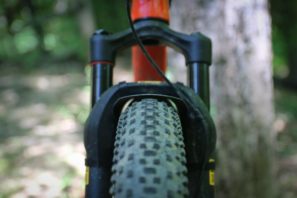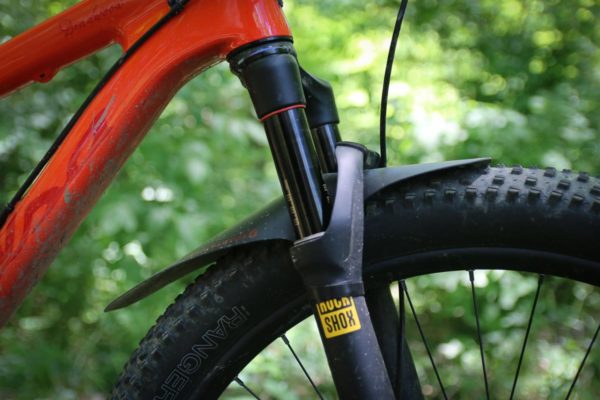When these simple, flexible plastic type fenders started showing up they seemed like a bit of back-of-the-mind protection on unexpected wet days. Years later, I now see them as almost essential pieces of kit – even in dry climates. While the obvious benefit may seem to be a small amount of protection from spray off the front wheel, in my opinion the best feature is easily overlooked. I’m talking about the protection the fenders provide for the seals on your fork. Like clockwork, each bike of mine with one of these simple fenders always ends up with cleaner seals and stanchions in dry or wet conditions. Cleaner seals mean less dirt that makes its way inside your fork, and better performance in the long run.
Plus, they actually do a pretty good job of keeping the spray out of your eyes. As long as they’re actually installed on your bike…
Even though they’re a fairly simple design, we’ve heard from a few companies that they’r not that easy to make. The plastic has to be flexible yet durable. It can’t shrink, crack, or fade. Add to that a desire to make them in the U.S. like Paradigm Cycle Works, and you have a lot of behind the scenes effort to make a solid product. Made in Colorado, Paradigm Cycle Works even sourced burly zip ties to make installation a breeze using two zip ties for the arch and one for each fork leg. Relatively small, the Guck Guard seems like it will work best with standard sized tires rather than plus size.
Weighing in at 24g (claimed weight of 22g), Paradigm Cycle Works says it is one of the lightest on the market. Guck Guards are offered in black, red, blue, organe, yellow, and azure, and retail for $14.99. We’ll have some more from Paradigm Cycle Works in the near future when we check out their made in Colorado Chain Guide, so stay tuned.
Looking at the strap on fender market a bit differently, Blackburn has two new options for the plus and fat tire world. Called the Barrier Mud Guard, and Barrier XL, the fenders are still a flexible 0.8mm polypropylene design, but they have an articulated center section to allow it to curve around the tire.
During installation, you’re meant to fold one arm over the other with the lower piece conveniently labeled “lower.” One the arms are overlapped and you thread in the included velcro strap, the fender takes a slightly curved shape. Also depending on the fork, tire size, and angle of installation, you might need to trim the fender which is easily done with the cut lines on printed on the bottom. While the Barrier should work with just about every tire size excluding fat bikes, the fender is very large which should make it a great option for plus tires.
Blackburn says these will work with “nearly any fork” which is mostly true. However, I found that the fat bike fender had a pretty terrible fit on my Lauf Carbonara, rubbing the tire even after trimming. The Lauf isn’t exactly a standard fit, so we’ll let that one slide. On bikes like the Salsa Deadwood Sus 29+, the standard fender just barely clears at the front. Running knobbier tires would probably require trimming the front back as it has more space underneath towards the arch. The included velcro strap is also a nice touch meaning you don’t have to use zip ties and can easily remove the fender and reinstall it, though it seems like it should include just a few more inches. The velcro comes in one roll, and I thought I was being pretty efficient when cutting it to length, but still ran out for the last strap. To make it work with the Rock Shox Pike, I should have cut the straps so they had about 1cm of overlap.
Priced at $14.99 for either the Barrier or Barrier XL, each is available in six colors of contour lines over the black base.
